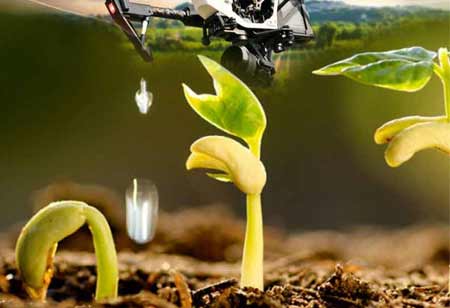Thank you for Subscribing to Agri Business Review Weekly Brief
Agriculture Is Being Transformed By Data Analytics
Data analytics is critical to improving business operations in every industry.

By
Agri Business Review | Wednesday, September 28, 2022
Stay ahead of the industry with exclusive feature stories on the top companies, expert insights and the latest news delivered straight to your inbox. Subscribe today.
Data analytics is critical to improving business operations in every industry.
Fremont, CA: Data analytics is critical to improving business operations in every industry. An organization can employ data analytics to enhance decision-making, analyze customer trends, track customer satisfaction, and identify new product and service opportunities to meet growing market needs. By integrating information and systems to assemble data across the business, organizations can gain real-time insights into marketing, product demand, sales, and finances.
With the world population anticipated to reach more than nine billion by the year 2050, The Food and Agriculture Organization (FAO) predicts that a 70-% growth in agricultural output will be needed to meet the projected demand. This driving force has considerably increased the interest in and utilization of data analytics in agribusiness.
Analytics Driving Agribusinesses
The precision agriculture market remains to evolve, allowing farmers to encompass data-driven solutions. While the future possibilities for data analytics in agriculture are unlimited, there are already strong advantages emerging, such as:
Increasing innovation and productivity.
To increase yield and profits, agribusinesses, farmers, and growers must leverage data and innovation to enhance productivity. With the advantages of technology, including soil sensors, GPS-equipped tractors, and weather tracking, there is now unprecedented visibility into operations and opportunities to optimize resources. When farmers enter real-time data, they get the information required to know when, where, and how to plant, down to a granular level.
A greater understanding of environmental challenges.
Unpredictable weather, severe storms, drought, and changing insect behaviors due to weather are all environmental factors that impact the agribusiness supply chain. Still, utilizing data to help navigate shifts in environmental conditions can help farmers prepare for challenges and maximize opportunities, all without wasting resources. For example, data analytics can help farmers monitor the health of crops in real-time, create predictive analytics related to future yields and help farmers make resource management decisions per proven trends.
Reducing waste and improving profits.
To remain profitable, agribusinesses must remain innovative and find ways to demonstrate real value. With a data analytics strategy, agribusinesses can answer sales-related questions with data from a single platform, creating the opportunity to make timely, evidence-based decisions. They also gain visibility of pricing, which enables decisions to be made based on profitability. Also, the right analytics will uncover opportunities at the customer level and inform the sales team to raise market share.
Enhancing supply chain management.
The present agribusiness value chain is very siloed and needs improvements to both communication and collaboration efforts. The transformative influence of precision agriculture technologies, such as data analytics, makes it easier for farmers to trace their products through the supply chain. This enables each farmer to communicate valuable information about product offerings and services to retailers, distributors, and key stakeholders.
Getting Started
The ability to obtain insights from data, create algorithms and invent new technologies continues to progress at an astounding speed. Combining shared information, smart technology, and ambitious innovation can accomplish amazing feats for the agribusiness industry.
However, it is important to consider this endeavor's strategy and long-term goals to take advantage of data analytics and create a competitive advantage. First, an Agri organization must have the appropriate tools in place before a data analytics strategy can be implemented:
• Collect data. This will enable you to aggregate data from your trusted, selected sources and simplify operations by storing the data in a single, safe location.
• Standardize data. The capacity to bring multiple data sets together in a single data structure will create the opportunity to run comparisons, track trends in real time, and uncover patterns in the data to help identify new opportunities.
• Clean data. Guaranteeing your data is clean, accurate, and complete will give you the confidence to decide based on that data.
• Enrich data. The chance to link to outside information – weather data, local soil analytics, insect tracking – will enable you to improve forecasting and identify potential challenges.
• Analyze data. Analyzing data is critical to gaining value from the information you are collecting. Learn the tools available for instituting analytics and ensure they support your desired results.





